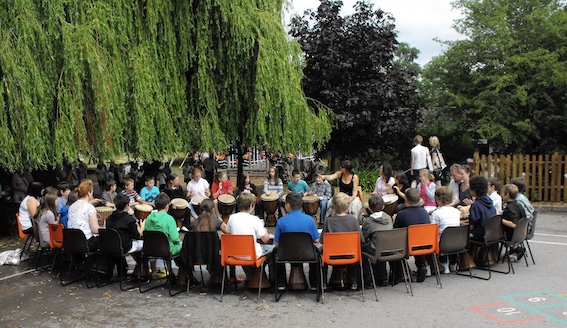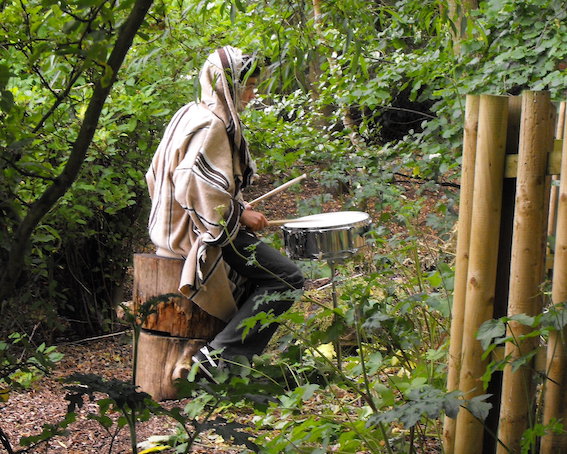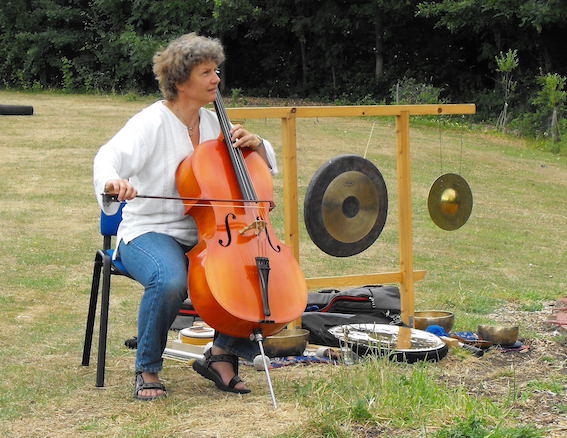When I pick up two stones on a beach and begin to tap them together, a slight shiver goes down my spine. Not for negative reasons, but with each clink I am reminded about who I am and where I’m from. I know that thousands of years ago, adults and children will have been music making this way.
Ever since humans have existed on this planet we have been entranced with the rhythms of nature and natural sounds. Thus when music happens outdoors in whatever form, it seems bigger, brighter and just a bit different from inside. The acoustics are different but so is the feel of playing music outside.

Thus, it was lovely to see lots of classes at The Coombes School have music lessons outside when I visited as part of the World Outside the Classroom conference in 2010. The Y6 class above are engaged in a drumming session. This can easily be undertaken indoors, but on a warm summer’s day, being outside does make the experience different. The sound travels far and the children could be heard a long way off!
As well as using formal instruments, the music teacher had also developed her own supply of homemade instruments:

The rhythm sticks are dowling bought from a DIY store. There are chopsticks in the other container. The short sticks in the basket and the big long sticks were all harvested from trees in the school grounds. The children helped the teacher to do this.

The big sticks were used for many different activities. I saw a series of singing games where the children tapped out the beat and passed the sticks around the circle. This involved a high degree of cooperation between the children to work effectively.
Alongside specific lessons, music featured naturally as part of wider activities. For example, I stumbled across this drummer in the woods, accompanying a play:

And as I mentioned in a previous post, a parent played the cello as children walked through a labyrinth:

Finally, although the video below has nothing to do with The Coombes School, it does demonstrate the potential of the natural world to provide us with some rhythmic sounds. This demonstrates you don’t need to bring musical instruments outside – there’s lots of rhythm work that can happen using the environment – be this natural or artificial. Introducing the Bodacious Beidler Kneeknockers…
This blog post was originally published in August 2010.




















The singing games with the long branches are fascinating.
And I share your joy in the sound of rocks clapping.
Thanks Juliet. I love this post and will be passing this on to my music teacher. There has been a very positive response to my trip at Withers and I’ll keep you up to date . This post will I am sure inspire my music teacher who is already excited about the potential of the outdoors. I’m currenly on a residential camp with my Yr 7’s. Best wishes
Stuart
I’m with Christie, those long branch songs/activities caught my attention too, especially since I have A LOT of long branches lying about right now!